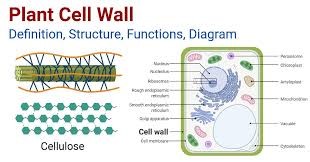What would be the complementary mRNA strand to the following strand of DNA?
CAGGCTAAG
GTCGATTC
GACCGTAAC
GUCGAUUC
CAGGCTAAG
Correct Answer : B
To find the complementary mRNA strand, we need to substitute the DNA nucleotides with their complementary RNA nucleotides. In RNA, adenine (A) pairs with uracil (U), cytosine (C) pairs with guanine (G), guanine (G) pairs with cytosine (C), and thymine (T) pairs with adenine (A). Therefore, the complementary mRNA strand to the given DNA sequence "CAGGCTAAG" would be "GACCGUAAC".
HESI A2 Exam Quiz Bank
TEAS 7 Exam Quiz Bank
Find More HESI Questions
HESI A2 Questions: We got the latest updated HESI A2 Questions
100% Money Refund: 100% money back guarantee if you take our full
assessment pass with 80% and fail the actual exam.
Live Tutoring: Fully customized live tutoring lessons.
Guaranteed A Grade: All students who use our services pass with 90%
guarantee.
Related Questions
Correct Answer is D
Explanation
The aerodynamic nature of a bird's wing is an example of the central theme in biology known as "Structure and function." This theme emphasizes the relationship between the form and function of biological structures. In the case of a bird's wing, its structure, including its shape, size, and arrangement of feathers, is intricately related to its function, which is to provide lift and thrust for flight. The specific structure of the wing, such as the curvature of the airfoil shape, enables it to generate lift by creating a pressure differential between the upper and lower surfaces of the wing when air flows over it. Thus, the structure of the wing is adapted to its function of facilitating flight in birds.
Correct Answer is A
Explanation
Water is the major component of blood plasma, making up approximately 90-92% of its composition by volume. Blood plasma is the liquid portion of blood, composed mostly of water along with dissolved solutes, such as ions, nutrients, gases, hormones, and waste products. Water in blood plasma serves as the solvent for carrying nutrients, hormones, and other molecules throughout the body, facilitates gas exchange in the lungs and tissues, helps regulate body temperature, and maintains blood volume and pressure. The remaining components of blood plasma, including ions (such as sodium, potassium, and calcium), proteins (such as albumin, globulins, and fibrinogen), and other solutes, contribute to various physiological functions in the body.
Correct Answer is B
Explanation
The cell wall is the part of a plant cell that acts as a barrier and provides support to the cell. It is a rigid, protective structure located outside the cell membrane and is composed primarily of cellulose, a complex carbohydrate. The cell wall gives plant cells their characteristic shape and provides mechanical support, preventing the cell from bursting due to osmotic pressure. It also helps regulate the movement of water and solutes into and out of the cell and protects the cell from pathogens and mechanical damage. In addition to cellulose, the cell wall may contain other polysaccharides, proteins, and lignin, depending on the type of plant cell and its function.

Correct Answer is A
Explanation
Gametes, the reproductive cells (sperm and eggs) of diploid organisms, contain half the number of chromosomes found in somatic cells. In a diploid organism with a chromosome number of 46, the gametes would contain 23 chromosomes. This reduction in chromosome number is achieved through the process of meiosis, which produces haploid gametes from diploid precursor cells. During meiosis, the chromosome number is halved through two rounds of cell division, resulting in the formation of four haploid daughter cells, each with half the original chromosome number.
This question was extracted from the actual HESI A2 Exam. Ace your TEAS exam with the actual HESI A2 Exam questions, Start your journey with us today
Visit Naxlex, the Most Trusted HESI Prep Platform With Guaranteed Pass of 90%.
Money back guarantee if you use our service and fail the actual exam. Option of personalised live tutor on your area of weakness.
